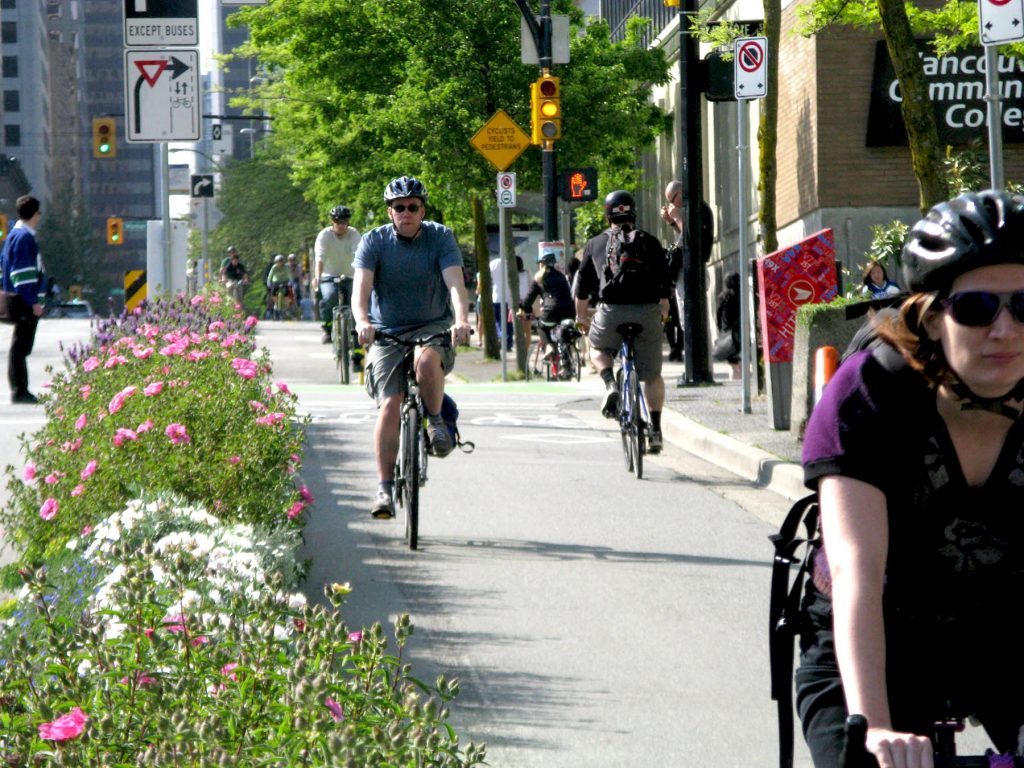January 9, 2023 - (Vancouver, BC) The Honourable Harjit S. Sajjan, Minister of International Development and Minister responsible for the Pacific Economic Development Agency of Canada, announced a federal investment of more than $1.3 million to support 27 active transportation planning projects in British Columbia.

The funding will enable the City of Vancouver to conduct a study to determine the feasibility of building a greenway running north-south through East Vancouver. The greenway would connect a number of discontinuous local streets and trails to provide a seamless and relatively flat route from the Ironworkers Memorial Second Narrows bridge to the Central Valley Greenway.
This would provide walking, cycling, and other active travel options for residents of all ages and abilities. The City of Vancouver will collect data at key intersections, assess traffic impacts, undertake stakeholder consultations, review best practices for green infrastructure, and develop cost estimates. Once constructed, the greenway would serve as a major connector, linking neighbourhoods, low-income housing developments, parks and a major neighbourhood, and provide access to North Vancouver and Burnaby.
Investments in the District of Chetwynd will help develop the Saulteau First Nations Trails Network Plan, an active travel strategy for Saulteau’s reserve, East Moberly Lake IR No. 169.
The strategy will identify safe trail connections between key destinations on the reserve, including health facilities, school and daycare centres, businesses, culturally significant areas, and administrative buildings. The plan will also establish policies that encourage community use of paths and incorporate Saulteau history, language, and culture into the trail network. Significant community engagement will ensure the final plan reflects the Nations’ priorities.
Funding announced today supports Canada’s National Active Transportation Strategy by supporting active transportation planning and stakeholder engagement activities that will help expand networks of pathways, bike lanes, trails and pedestrian bridges.
By investing in infrastructure, the Government of Canada is growing our country’s economy, increasing the resiliency of our communities, and improving the lives of Canadians.
“Accessible active transportation options are key to healthy, green, and inclusive communities that work for all residents. Strategic planning projects like the ones announced today will build better connected communities, provide safe travel routes, and help us achieve net-zero climate emissions by 2050. The Government of Canada is proud to support these essential projects,” said the Honourable Harjit S. Sajjan, Minister of International Development and Minister responsible for the Pacific Economic Development Agency of Canada, on behalf of the Honourable Dominic LeBlanc, Minister of Intergovernmental Affairs, Infrastructure and Communities
“Today’s funding announcement will allow the City of Vancouver to make meaningful progress on expanding cycling and pedestrian infrastructure in East Vancouver through further exploration of the future Skeena – Cassiar Greenway. Quality cycling and pedestrian infrastructure is an vital component of our commitments towards making Vancouver a fifteen minute city and the most accessible city in the world. We want to thank the Federal Government for their spirit of collaboration in helping move this important active transportation initiative forward,” commented his Worship Ken Sim, Mayor of Vancouver
“The Saulteau First Nations is pleased to be a successful candidate via the Government of Canada’s Active Transportation Fund. We strive for the continued growth and success of our nation and are pleased to provide the development of a safe trail Network Plan for our community and membership,” added Mary N. Doyle, Land Agent, Saulteau First Nations.
Quick Facts
Active transportation refers to the movement of people or goods powered by human activity, and includes walking, cycling and the use of human-powered or hybrid mobility aids such as wheelchairs, scooters, e-bikes, rollerblades, snowshoes and cross-country skis, and more.
The Active Transportation Fund will provide $400 million over five years to make travel by active transportation easier, safer, more convenient and more enjoyable, in support of Canada’s first National Active Transportation Strategy.
Municipal governments, local and regional governments such as service districts, and Indigenous organizations are eligible recipients for the Active Transportation Fund. Provinces, territories, and not-for-profit organizations are also eligible in specific circumstances.
The Active Transportation Fund’s first general application intake closed on March 31, 2022. Applications for planning and capital projects from eligible Indigenous recipients continue to be accepted on an ongoing basis.
Canada’s National Active Transportation Strategy is the country’s first coast-to-coast-to-coast strategic approach for promoting active transportation and its benefits. The strategy’s aim is to make data-driven and evidence-based investments to build new and expanded active transportation networks and to create safe environments for more equitable, healthy, active and sustainable travel options to thrive.
Active transportation infrastructure provides many tangible benefits, creating good middle-class jobs, growing the economy, promoting healthier lifestyles, advancing equity amongst vulnerable Canadians, cutting air and noise pollution, and reducing greenhouse gas emissions. Investing in safer active transportation infrastructure is key to ensuring people of all ages and abilities can access jobs and services and connect with their communities.
Federal funding is conditional on signing funding agreements.
















